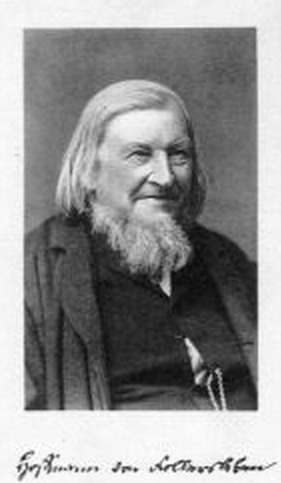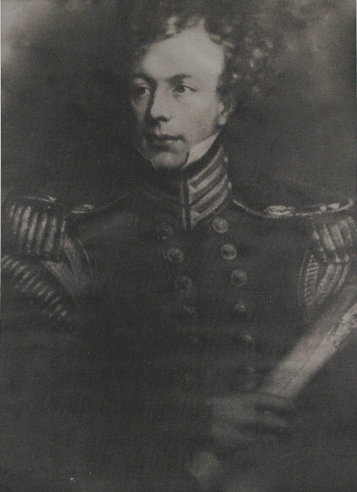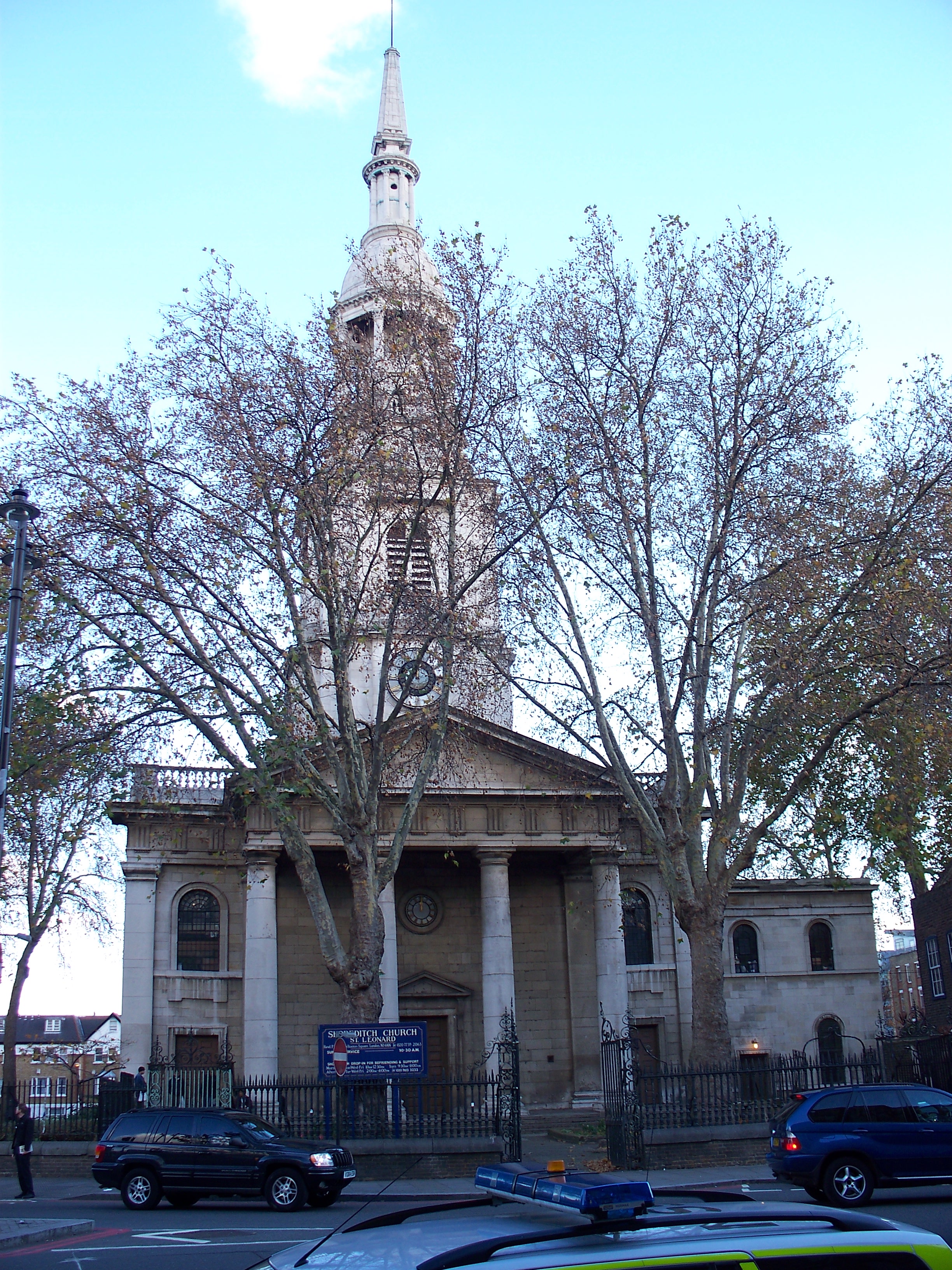|
James Carter (engraver)
James Carter ( London 23 December 1798 – 23 August 1855) was a British engraver. Life Carter was born in the London parish of Shoreditch, and while still young gained the silver medal of the Society of Arts for drawing. He was first articled to Edmund Turrell, an architectural engraver, but later concentrated on landscapes and figures. James Carter married Sarah Emily Wise on 22 December 1823 and died on 23 August 1855, leaving his wife Sarah and nine daughters. Works From 1830 to 1840 Carter was employed largely on engravings for the annuals, especially the ''Landscape Annual'' of Robert Jennings, for which he executed plates after Samuel Prout, David Roberts, and James Holland. He was also employed by John Weale, on numerous architectural works. When the engravings from the Vernon Gallery appeared in '' The Art Journal'', Carter was given ''The Village Festival'', painted by Frederick Goodall. It was followed in the same series by engravings from ''The Angler's Nook ... [...More Info...] [...Related Items...] OR: [Wikipedia] [Google] [Baidu] |
London
London is the capital and largest city of England and the United Kingdom, with a population of just under 9 million. It stands on the River Thames in south-east England at the head of a estuary down to the North Sea, and has been a major settlement for two millennia. The City of London, its ancient core and financial centre, was founded by the Romans as '' Londinium'' and retains its medieval boundaries.See also: Independent city § National capitals The City of Westminster, to the west of the City of London, has for centuries hosted the national government and parliament. Since the 19th century, the name "London" has also referred to the metropolis around this core, historically split between the counties of Middlesex, Essex, Surrey, Kent, and Hertfordshire, which largely comprises Greater London, governed by the Greater London Authority.The Greater London Authority consists of the Mayor of London and the London Assembly. The London Mayor is distinguished fr ... [...More Info...] [...Related Items...] OR: [Wikipedia] [Google] [Baidu] |
Patrick Nasmyth
Patrick Nasmyth, (7 January 1787 – 17 August 1831), was a Scottish landscape painter. He was the eldest son of the artist Alexander Nasmyth. Life Nasmyth was one of the eleven children of Barbara and Alexander Nasmyth of Edinburgh. His six sisters—Jane, Barbara, Margaret, Elizabeth, Anne, and Charlotte — were notable artists whilst his younger brother, James, was a prominent engineer who invented the steam hammer. J. C. B. Cooksey, ‘Nasmyth family (per. 1788–1884)’, Oxford Dictionary of National Biography, Oxford University Press, 200accessed 14 May 2017/ref> Nasmyth was born in Edinburgh and was named after his father's patron, Patrick Miller. He developed an affinity for art at an early age. He and his siblings were all given art lessons. His father was keen to see that they were independent. As a teenager Nasmyth lost the use of his right hand following an accident, forcing him to learn how to paint with his left. He also lost most of his hearing through illn ... [...More Info...] [...Related Items...] OR: [Wikipedia] [Google] [Baidu] |
British Engravers
British may refer to: Peoples, culture, and language * British people, nationals or natives of the United Kingdom, British Overseas Territories, and Crown Dependencies. ** Britishness, the British identity and common culture * British English, the English language as spoken and written in the United Kingdom or, more broadly, throughout the British Isles * Celtic Britons, an ancient ethno-linguistic group * Brittonic languages, a branch of the Insular Celtic language family (formerly called British) ** Common Brittonic, an ancient language Other uses *''Brit(ish)'', a 2018 memoir by Afua Hirsch *People or things associated with: ** Great Britain, an island ** United Kingdom, a sovereign state ** Kingdom of Great Britain (1707–1800) ** United Kingdom of Great Britain and Ireland (1801–1922) See also * Terminology of the British Isles * Alternative names for the British * English (other) * Britannic (other) * British Isles * Brit (other) * Briton (d ... [...More Info...] [...Related Items...] OR: [Wikipedia] [Google] [Baidu] |
1855 Deaths
Events January–March * January 1 – Ottawa, Ontario, is incorporated as a city. * January 5 – Ramón Castilla begins his third term as President of Peru. * January 23 ** The first bridge over the Mississippi River opens in modern-day Minneapolis, a predecessor of the Father Louis Hennepin Bridge. ** The 8.2–8.3 Wairarapa earthquake claims between five and nine lives near the Cook Strait area of New Zealand. * January 26 – The Point No Point Treaty is signed in the Washington Territory. * January 27 – The Panama Railway becomes the first railroad to connect the Atlantic and Pacific Oceans. * January 29 – Lord Aberdeen resigns as Prime Minister of the United Kingdom, over the management of the Crimean War. * February 5 – Lord Palmerston becomes Prime Minister of the United Kingdom. * February 11 – Kassa Hailu is crowned Tewodros II, Emperor of Ethiopia. * February 12 – Michigan State University (the "pioneer" land- ... [...More Info...] [...Related Items...] OR: [Wikipedia] [Google] [Baidu] |
1798 Births
Events January–June * January – Eli Whitney contracts with the U.S. federal government for 10,000 muskets, which he produces with interchangeable parts. * January 4 – Constantine Hangerli enters Bucharest, as Prince of Wallachia. * January 22 – A coup d'état is staged in the Netherlands ( Batavian Republic). Unitarian Democrat Pieter Vreede ends the power of the parliament (with a conservative-moderate majority). * February 10 – The Pope is taken captive, and the Papacy is removed from power, by French General Louis-Alexandre Berthier. * February 15 – U.S. Representative Roger Griswold (Fed-CT) beats Congressman Matthew Lyon (Dem-Rep-VT) with a cane after the House declines to censure Lyon earlier spitting in Griswold's face; the House declines to discipline either man.''Harper's Encyclopaedia of United States History from 458 A. D. to 1909'', ed. by Benson John Lossing and, Woodrow Wilson (Harper & Brothers, 1910) p171 * March &ndas ... [...More Info...] [...Related Items...] OR: [Wikipedia] [Google] [Baidu] |
Letitia Elizabeth Landon
Letitia Elizabeth Landon (14 August 1802 – 15 October 1838) was an English poet and novelist, better known by her initials L.E.L. The writings of Landon are transitional between Romanticism and the Victorian Age. Her first major breakthrough came with ''The Improvisatrice'' and thence she developed the metrical romance towards the Victorian ideal of the Victorian monologue, casting her influence on Elizabeth Barrett Browning, Robert Browning and Christina Rossetti. Her influence can also be found in Alfred Tennyson and in America, where she was very popular. Poe regarded her genius as self-evident. In spite of these wide influences, due to the perceived immorality of Landon's lifestyle, her works were more or less deliberately suppressed and misrepresented after her death. Early life Letitia Elizabeth Landon was born on 14 August 1802 in Chelsea, London to John Landon and Catherine Jane, ''née'' Bishop.Byron (2004). A precocious child, Landon learned to read as a toddler ... [...More Info...] [...Related Items...] OR: [Wikipedia] [Google] [Baidu] |
Letitia Elizabeth Landon (L
Letitia Elizabeth Landon (14 August 1802 – 15 October 1838) was an English poet and novelist, better known by her initials L.E.L. The writings of Landon are transitional between Romanticism and the Victorian Age. Her first major breakthrough came with ''The Improvisatrice'' and thence she developed the metrical romance towards the Victorian ideal of the Victorian monologue, casting her influence on Elizabeth Barrett Browning, Robert Browning and Christina Rossetti. Her influence can also be found in Alfred Tennyson and in America, where she was very popular. Poe regarded her genius as self-evident. In spite of these wide influences, due to the perceived immorality of Landon's lifestyle, her works were more or less deliberately suppressed and misrepresented after her death. Early life Letitia Elizabeth Landon was born on 14 August 1802 in Chelsea, London to John Landon and Catherine Jane, ''née'' Bishop.Byron (2004). A precocious child, Landon learned to read as a toddle ... [...More Info...] [...Related Items...] OR: [Wikipedia] [Google] [Baidu] |
Samuel Drummond
Samuel Drummond (25 December 1766, London – 6 August 1844, London) was a British painter, especially prolific in portrait and marine genre painting. His works are on display in the National Portrait Gallery, the National Maritime Museum and the Walker Art Gallery. Life Drummond was born to Jane Bicknell and James Drummond, a London baker. At about thirteen Drummond was apprenticed to the sea service, working on the Baltic trade routes for six or seven years.Samuel Drummond National Portrait Gallery After the navy, Drummond worked briefly as a clerk before entering the Royal Academy Schools on 15 July 1791. Drummond started his portraying with [...More Info...] [...Related Items...] OR: [Wikipedia] [Google] [Baidu] |
Sir Marc Isambard Brunel
Sir Marc Isambard Brunel (, ; 25 April 1769 – 12 December 1849) was a French-British engineer who is most famous for the work he did in Britain. He constructed the Thames Tunnel and was the father of Isambard Kingdom Brunel. Born in France, Brunel fled to the United States during the French Revolution. In 1796, he was appointed Chief Engineer of New York City. He moved to London in 1799, where he married Sophia Kingdom. In addition to the construction of the Thames Tunnel, his work as a mechanical engineer included the design of machinery to automate the production of pulley blocks for the Royal Navy. Brunel preferred the given name Isambard, but is generally known to history as Marc to avoid confusion with his more famous son. Early life in France Brunel was the second son of Jean Charles Brunel and Marie-Victoire Lefebvre. Jean Charles was a prosperous farmer in Hacqueville, Normandy, and Marc was born on the family farm. It was customary for the first son to inher ... [...More Info...] [...Related Items...] OR: [Wikipedia] [Google] [Baidu] |
Edward Matthew Ward
Edward Matthew Ward, , (14 July 1816 – 15 January 1879) was a British painter who specialised in historical genre. He is best known for his murals in the Palace of Westminster depicting episodes in British history from the English Civil War to the Glorious Revolution. Life Early career Ward was born in Pimlico, London. As a youth, he created illustrations for the well-known book ''Rejected Addresses'', written by his uncles James and Horace Smith. He also illustrated the papers of Washington Irving. In 1830 he won the "silver palette" from the Society of Arts. With support from David Wilkie and Francis Leggatt Chantrey, he became a student at the Royal Academy Schools. In 1836 he travelled to Rome, where in 1838 he gained a silver medal from the Academy of St Luke for his ''Cimabue and Giotto'', which in 1839 was exhibited at the Royal Academy. While a student at the Schools, Ward became a member of The Clique, a group of painters, led by Richard Dadd. Like other members of th ... [...More Info...] [...Related Items...] OR: [Wikipedia] [Google] [Baidu] |
Frederick Goodall
Frederick Goodall (17 September 1822 – 29 July 1904) was an English artist. Life Frederick Goodall was born in London in 1822, the second son of steel line engraver Edward Goodall (1795–1870). He received his education at the Wellington Road Academy. Goodall's first commission, for Isambard Brunel, was six watercolour paintings of the Thames Tunnel. Four of these were exhibited at the Royal Academy when Frederick was 16. His first oil won a Society of Arts silver medal. He exhibited work at the Royal Academy 27 times between 1838 and 1859. He was elected an Associate of the Royal Academy (ARA) in 1852 and a full Royal Academician (RA) in 1863. Goodall visited Egypt twice; in 1858 and again in 1870, both times travelling and camping with Bedouin tribesmen. On his first visit to Egypt, he shared a house and studio with artist, Carl Haag and the pair often sketched together, both in the streets and outside Cairo, especially in the area around the Pyramids. On his ... [...More Info...] [...Related Items...] OR: [Wikipedia] [Google] [Baidu] |
Shoreditch
Shoreditch is a district in the East End of London in England, and forms the southern part of the London Borough of Hackney. Neighbouring parts of Tower Hamlets are also perceived as part of the area. In the 16th century, Shoreditch was an important centre of the Elizabethan Theatre, and it has been an important entertainment centre since that time. Today, it hosts many pubs, bars and nightclubs. The most commercial areas lie closest to the city of London and along the A10 Road, with the rest mostly residential. Toponymy Early spellings of the name include ''Soredich'' (c.1148), ''Soresdic'' (1183–4), ''Sordig'' (1204), ''Schoresdich'' (1220–21), and other variants. Toponymists are generally agreed that the name derives from Old English "''scoradīc''", i.e. "shore-ditch", the shore being a riverbank or prominent slope; but there is disagreement as to the identity of the "shore" in question. A suggestion made by Eilert Ekwall in 1936 that the "ditch" might have been one leadi ... [...More Info...] [...Related Items...] OR: [Wikipedia] [Google] [Baidu] |








